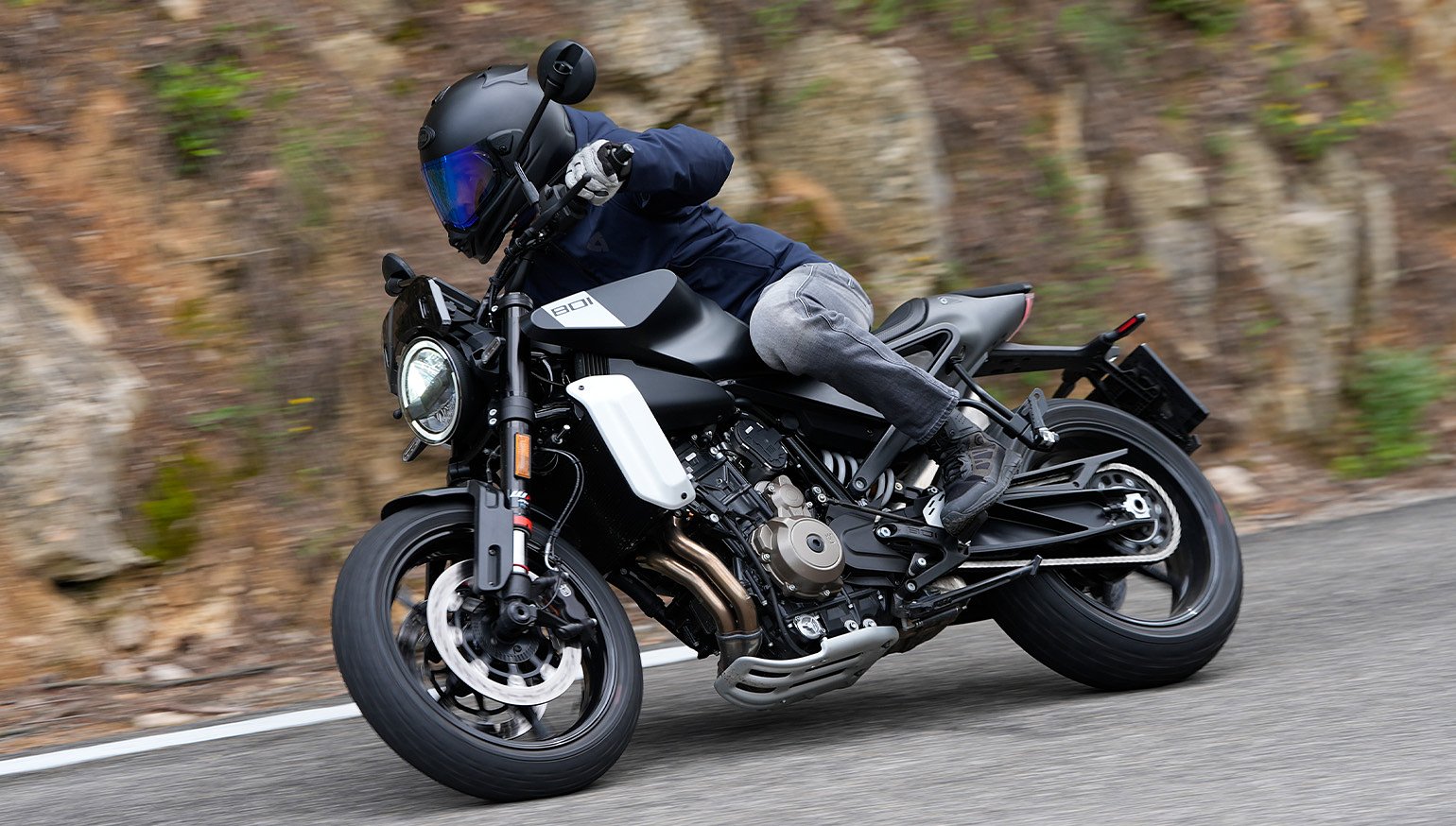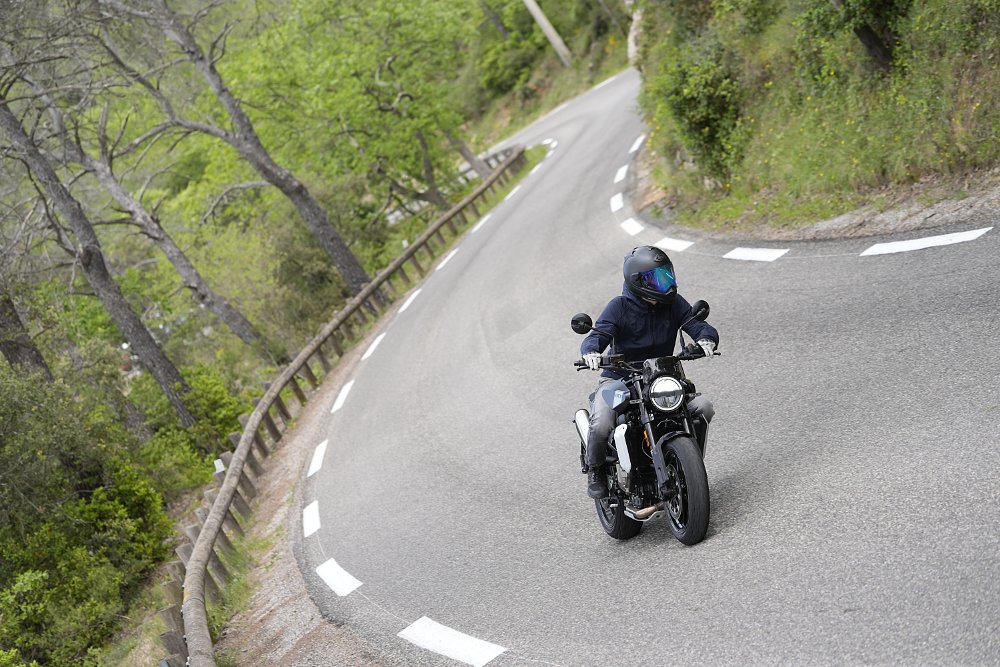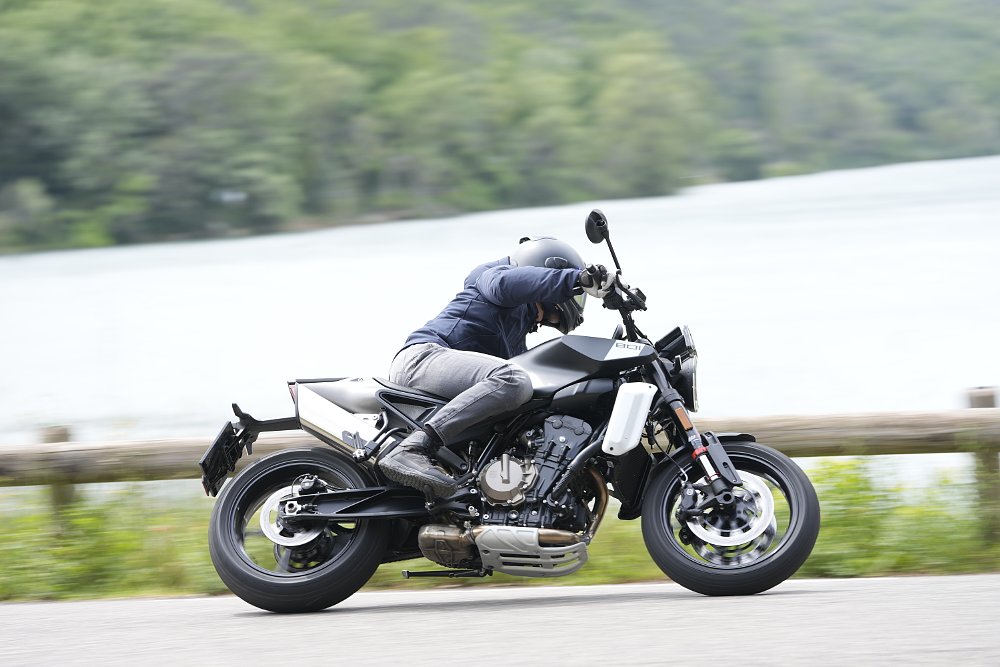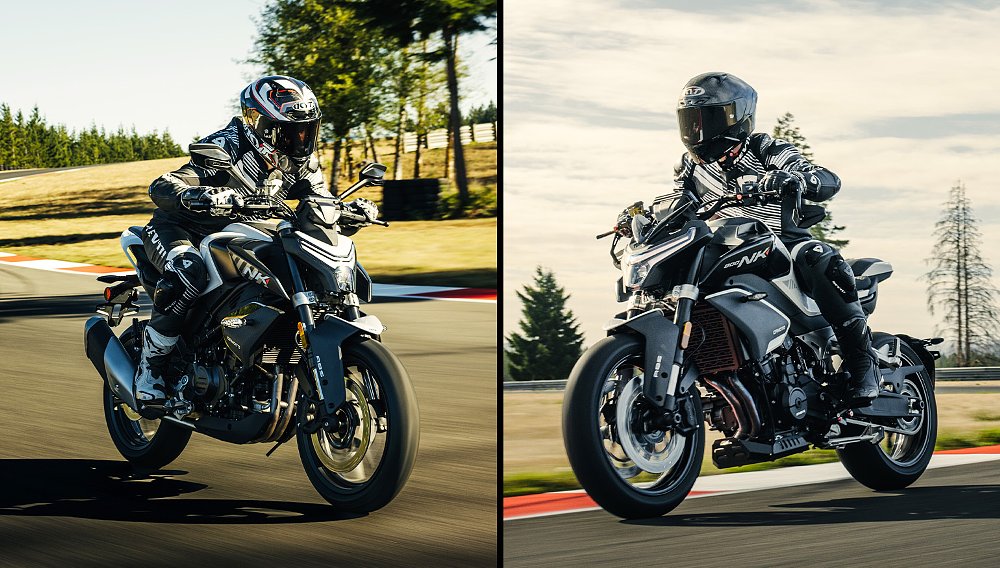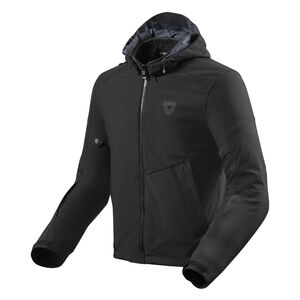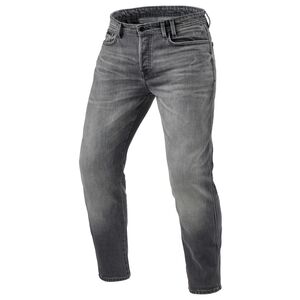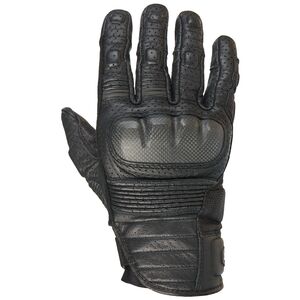The Svartpilen 801 can do it all. Well, according to Husqvarna marketing campaigns, it can. The pre-production prototype first broke cover in teaser videos, turning laps around a flat track and ice racing on a frozen lake. Weeks later, the official announcement video cast the twin-powered Svartpilen as a part-time trail explorer.
That’s why it came as a big surprise when the ride route for the model’s global press launch only included the paved backroads around Nans-les-Pins, France. What gives, I wondered? Could it be the lawyers and ever-looming liability concerns? Maybe the rigmarole of French off-road permitting was to blame. Something tells me it comes down to how Husqvarna and its parent company, Pierer Mobility Group, position the new naked bike.
Ignoring the Svartpilen’s shared lineage with the 790 Duke is impossible. KTM’s “Scalpel” lends its engine, frame, and swingarm to the 801 the way an eldest child passes on hand-me-downs to a kid brother. That doesn’t mean the Svarty wants to follow in the footsteps of its older sibling. Instead, it crafts its own identity with scrambler-adjacent cosmetics and componentry. Chief among them are neo-retro styling and Pirelli MT60RS tires.
Is that enough to differentiate it from its orange-clad kin? Can you slap a set of braced handlebars on a roadster and call it a scrambler? Can punchy marketing manufacture off-road ruggedness where there is none? These aren’t the questions Husqvarna invited me to the South of France to answer, but they were the only ones on my mind when I first laid eyes on the 801.
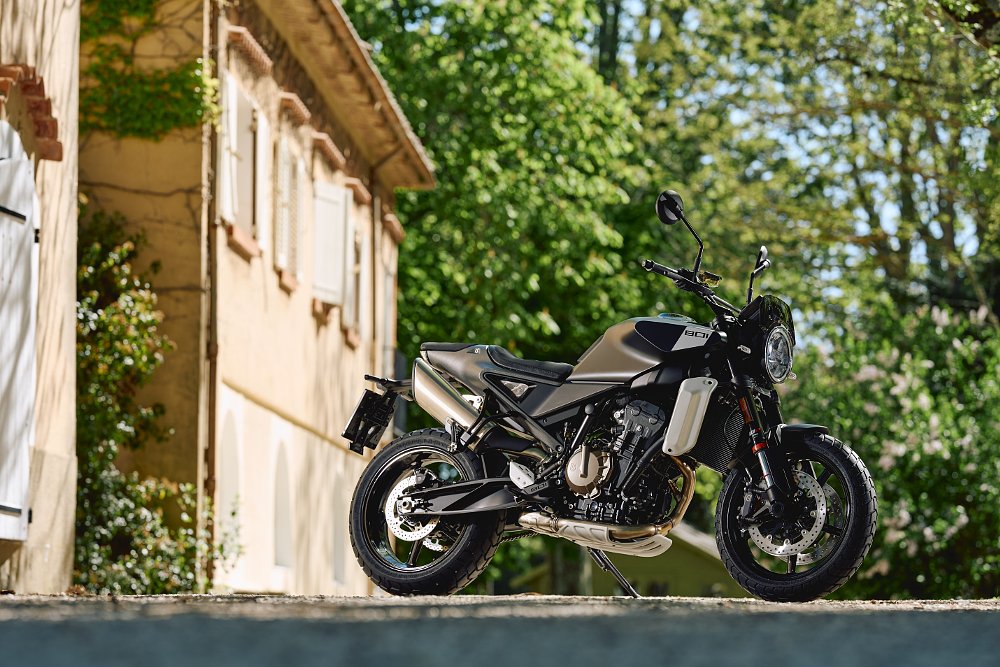
Au contraire
A babbling brook, linden trees, and an 18th-century French country mansion (shutters and all) wait just beyond the conference room windows. On the other side, it’s a very different scene. Technical specifications, graphs, and charts project on the screen. Cast aluminum subframe panels and a fully built LC8c engine clutter nearby tables. All the slides and props tell the same story: the twin-cylinder Svartpilen 801 is superior to the single-cylinder 701 it succeeds. There’s just one problem. The 801’s story is less about succession and more about sibling rivalry.
The 790 and 801 have little in common based on outward appearances, but both models share much of the same DNA. For starters, the Duke’s chromium-molybdenum tubular steel frame also provides the skeletal framework for the Svart. Even the die-cast, open-lattice swingarm carries over to the “scrambler-inspired” model. However, a newly designed subframe conforms to Husqvarna’s conventional-meets-contemporary aesthetic.
At the heart of the 801 beats the same 799 cc parallel twin found in the 790. Not even the mill’s state of tune changes, with the Swedish subsidiary reporting 105 horsepower (at 9,250 rpm) and 64.2 foot-pounds of torque (at 8,000 rpm). A Power Assist Slipper Clutch (PASC) system benefits both bikes but the Svart gains a slight advantage with a bi-directional quickshifter (Easy Shift) equipped as standard.
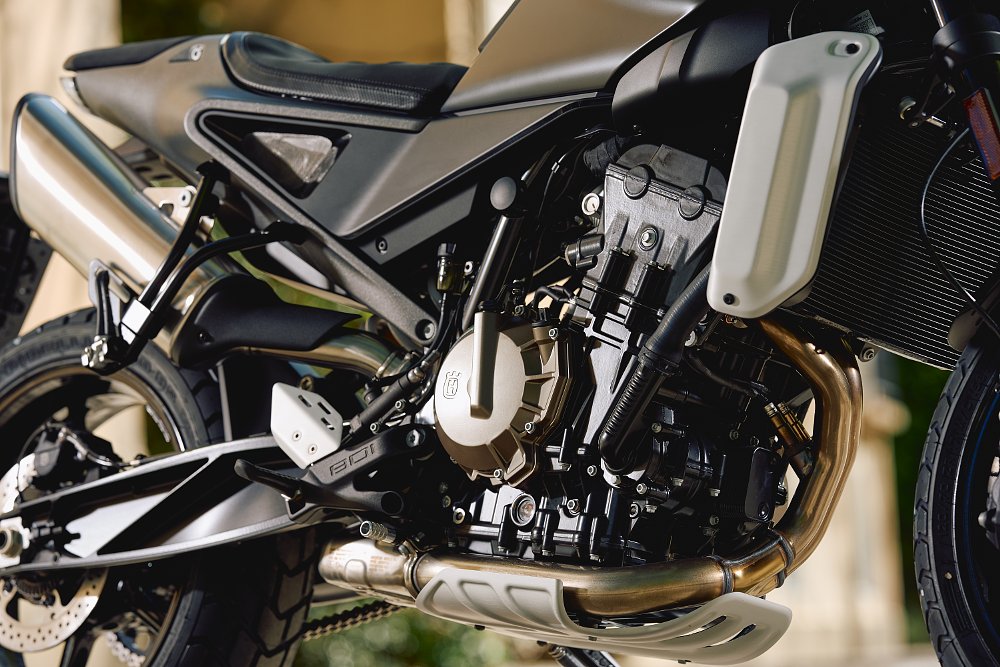
The slight differences go on. WP supplies both models with its APEX suspension, but the Svartpilen’s 43 mm fork offers rebound and compression adjustability. Its monoshock is also preload- and rebound-adjustable. All that's a significant upgrade over the 790's non-adjustable front end and preload-adjustable shock. However, just like the Duke, the Svart yields 5.5 inches of travel up front and 5.9 inches further aft. None of which exactly screams off-road-ready. A dual-disc J.Juan front braking system also speaks to the model's primary road duties.
Not even the model’s dimensions dramatically diverge from its Austrian relative. Husqvarna and KTM list both bikes with a 1,475 mm (58.1-inch) wheelbase — despite the 801’s slightly less aggressive 24.5-degree rake. The Husky’s seat height is only a hair shorter at 820 mm (32.3 inches), its claimed weight is a touch heavier at 399 pounds (without fuel), and oddly enough, for a scrambler, its ground clearance is a smidgen lower at 174 mm (6.85 inches).
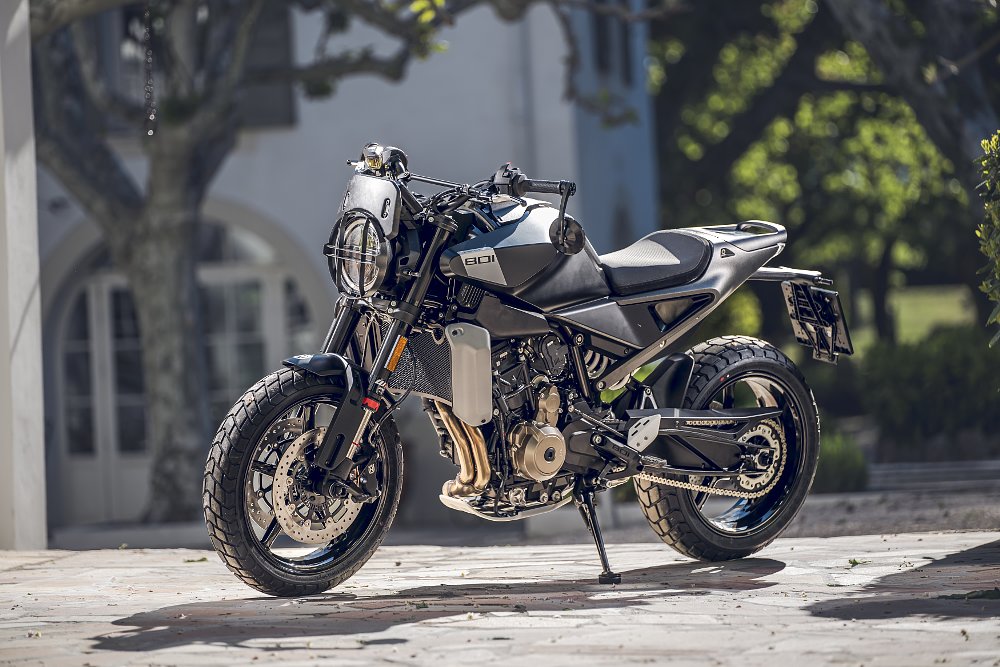
Where the Svarty makes its name is in the styling department. It's both futuristic and retro-informed, from the tail to the tank to the single round headlight. A braced handlebar, slotted skid plate, and tracker-esque tires complete its dirt-aspiring look. Underneath that adventurous exterior, though, the Svartpilen 801’s roadster roots are immediately apparent.
Déjà vu
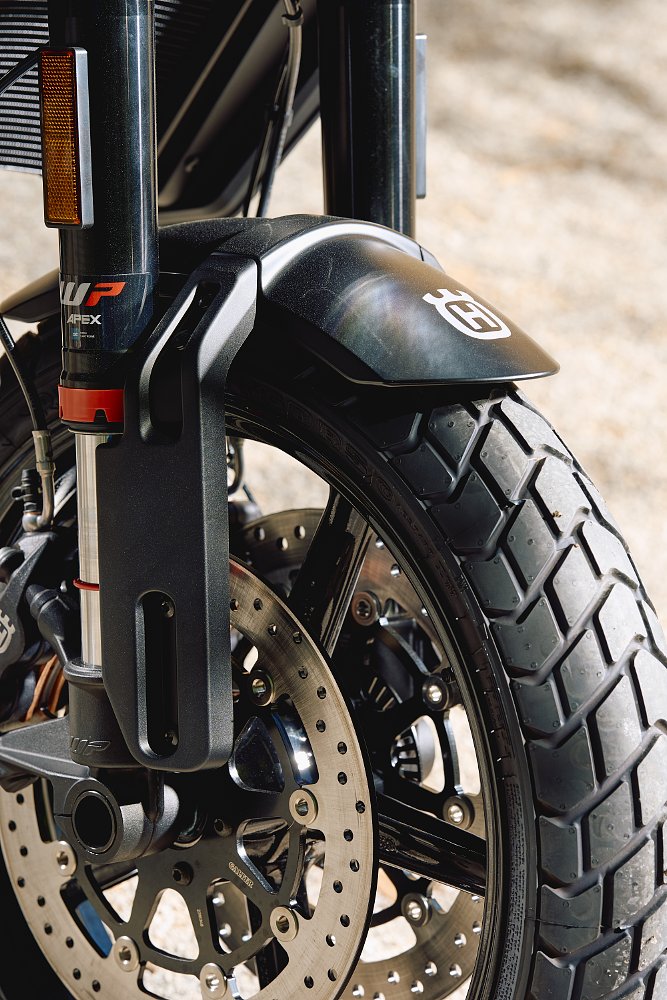
The roads surrounding Domaine de Châteauneuf consist of dual carriageways and one-lane mountain passes. They’re low on traffic, high on curves, and a perfect venue for light-handling naked bikes. The 801 falls squarely into that category. Damp patches remained on the roads by our group’s 8:30 a.m. departure time. Temps in the high 40s didn’t exactly cultivate confidence, either. Pair cold, wet pavement with the Pirelli MT60RS tires, and it’s easy to see why grip (or lack thereof) was a major, nay, a nagging concern.
A breakneck pace put those concerns to the test right away. The tires’ performance put them to bed even sooner. Not even heavy braking and high lean angles (for the road) could foil the Svartpilen’s composure. I can’t say the MT60s top the list for feedback, feel, or overall grip, but they certainly exceeded this reviewer’s expectations. Yet, if given the chance, I’d still replace the stock tires with something sportier. That’s especially so when taking the model’s lithe handling into account.
Our route featured tight and technical chicanes, low-gear hairpins, and blind decreasing-radius corners. No matter the turn, the Svart was virtually unfazed. It steered with equal parts immediacy and fluidity. Yet, it lacked nothing in stability (its lengthy swingarm probably has something to do with that). Somewhere along the winding road of Col de l'Espigoulier, while flip-flopping the bike through the esses like a show dog slashing through a set of weave posts, I wondered why Husky didn’t just name it the Scalpel-pilen instead. Its line-holding agility is only rivaled by that of its athletic sibling. That family trait isn’t something to hide, it’s something to flaunt.
All that nimbleness doesn’t come at the expense of compliance, either. The APEX suspension handled speed bumps, potholes, and G-outs the same way it handled twists and turns. It neither bucks nor wallows. It’s neither harsh nor plush. It’s both capable and comfortable. That’s not to say there isn’t room for personalization. WP limits the fork’s rebound and compression adjustments to just five clicks. The monoshock’s preload and rebound receive the same treatment. While that may seem restrictive to racers, the discernible differences between each setting encourage suspension layman (myself included) to adjust the dials themselves.
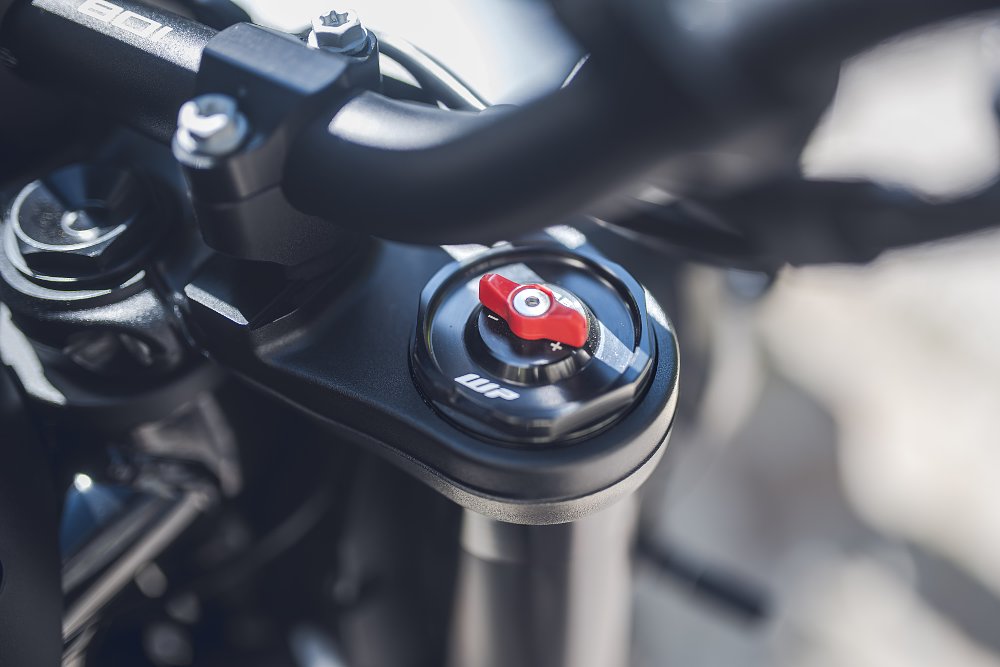
That’s why it was so unfortunate that the APEX suspenders performed so well out of the box. At least for this 175-pound fully geared rider, they did. All four adjusters come from the factory set to the third position, which caters to those between 165 and 175 pounds. How convenient, huh? Throughout the entire day, I only added one click of rebound damping to the fork. Many of my fellow journalists, including those much heavier than me, didn’t bother with the adjusters at all. That’s a testament to the suspension’s versatility and performance in base form.
Husqvarna matches that competent chassis with the LC8c powerplant. In standard trim, the engine is every bit as engaging as previously advertised. Street mode isn’t lacking for power. Sport mode just pours it on sooner. Sounds like a win/win to me. In either mode, the mid-range is where the torquey twin thrives. It remains smooth throughout much of the rev range too, only transferring control-shaking vibes to the rider beyond 7,000 rpm. Maybe more impressive is the engine’s low-speed manners.
I’ll be candid. I’m tired of criticizing modern bikes for sub-par fueling. I know all too well that restrictive emissions are often to blame, but I can only find so many ways to say, “It’s too lean down low.” I’m glad to report the Svart suffers from no such issues. No hiccups, burbles, or stutter-steps away from a stop. No premature stalling or bogging to speak of. Just a progressive yet aggressive powerband that eagerly revs up to 9,800 rpm. The mill reaches those heights faster than ever thanks to the 801’s quickshifter.
Fitted as standard, the bi-direction Easy Shift doesn’t just enhance the model’s sporty nature, it also marks a new level of sophistication for Pierer Mobility brands. It's not uncommon to hear KTM, Gas Gas, and Husqvarna quickshifters described as clunky or finicky. When using the quickshifter on the KTM 890 SMT that Zack recently reviewed, I frequently found false neutrals between second and third gears or missed shifts altogether. That’s far from the case here. Whether shifting at lower revs or neutral throttle, each gear change was swift and direct. I can’t say the Svartpilen’s Easy Shift is as smooth as examples from Ducati, Triumph, or even BMW, but it’s a clear improvement for Husky.
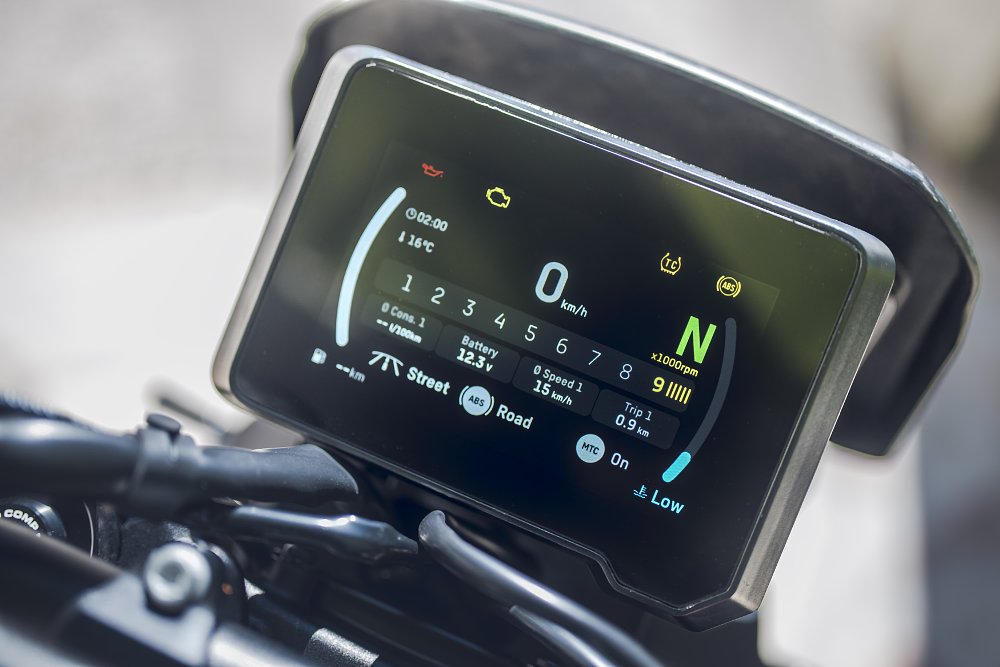
The same goes for the 801’s Dynamic mode. As an optional add-on, the tech upgrade includes the fully customizable ride mode that enables users to choose from 10 levels of Motor Slip Regulation (MSR) and five anti-wheelie settings. Riders can even pick between the throttle response found in Street, Sport, and Dynamic modes. To preserve my other rider aid settings, I often stayed in Dynamic mode and simply changed the throttle response to suit the conditions. Add that flexibility to the cornering ABS, lean-sensitive Motorcycle Traction Control (MTC), and Supermoto ABS (disengages rear ABS) already on the Svartpilen, and you have one robust electronics suite, especially for a middleweight model.
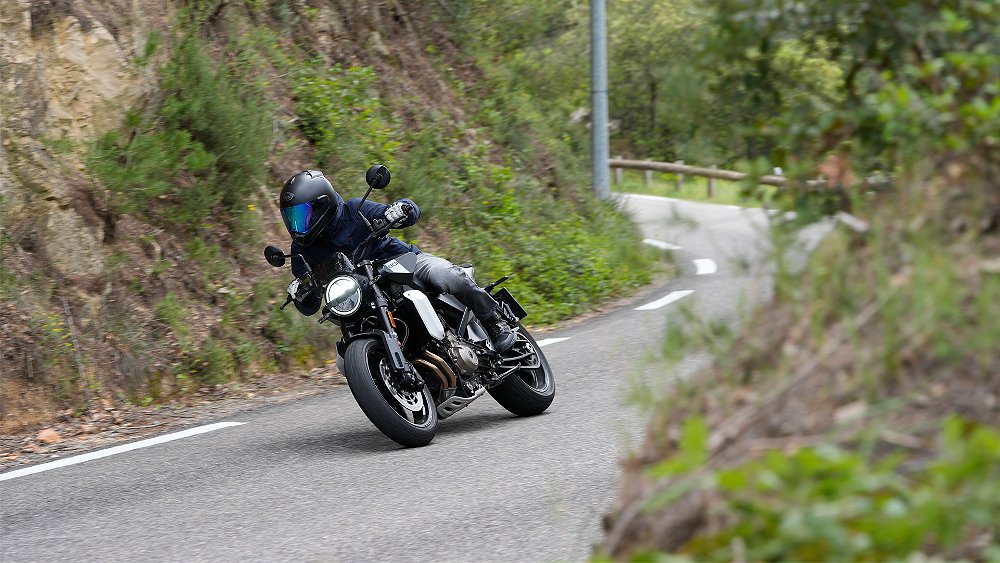
That’s why the ease of navigating the system was such a refreshing surprise. Husqvarna takes what’s complex and makes it simple. The 801’s five-inch TFT display may be the star of the show, but the left switch cube keeps the production running. Its simple layout is both intelligible and intuitive. Users navigate the various submenus with two directional buttons, an enter button, and a back button. Easy-peasy. Not once did I ask for assistance or run into user interface bugs. That’s rare these days, as many manufacturers run “pre-production” software at press launches.
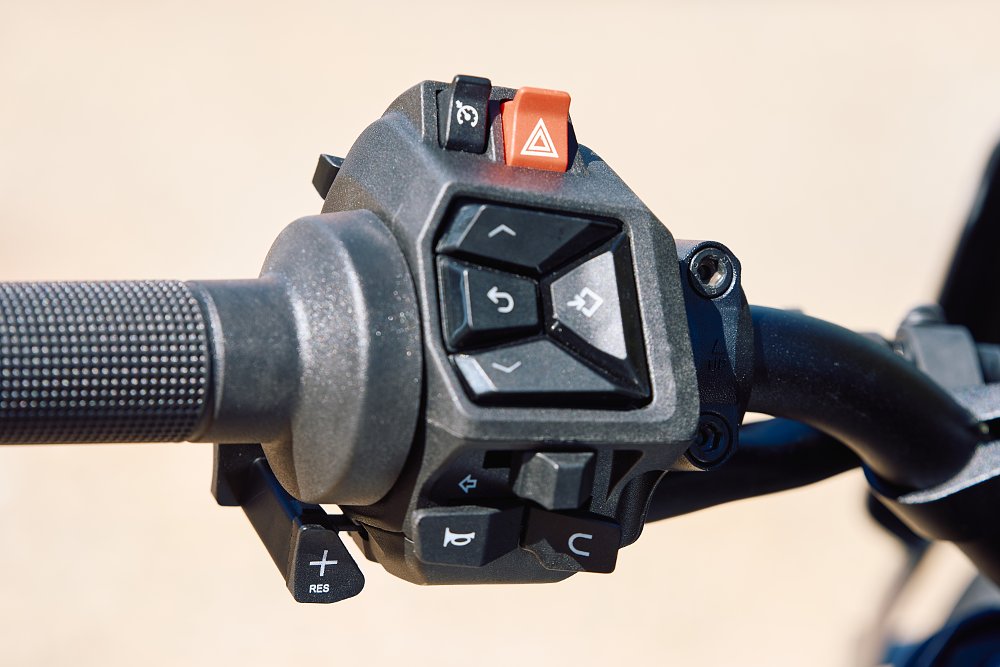
The only nit I can pick with the user experience is the TFT’s bar-style tachometer. With no quarter or half markers between the numerical figures, knowing where you are in the rev range can turn into a guessing game. Luckily, two shift indicator lights (yes, two) signal the rider to upshift at 8,500 rpm and just over 9,000 rpm. Whereas both lights flash in Husqvarna yellow, the first bisects the screen (at a diagonal angle) while the second takes over the entire display, imploring the user to grab a gear before hitting the 9,800-rpm rev limiter. It isn’t a replacement for a more accurate tach but it's a nice consolation prize, nonetheless. You win some, you lose some.
Fin
Ice-racing. Flat-tracking. Trail-riding. Yes, the Svartpilen 801 can do it all. Husqvarna has the video proof to back it up. And yet, similar to the units at the global press launch, most Svartpilens won’t venture beyond the pavement. That’s in no way a bad thing. After all, it can do everything its KTM counterpart can do (and more). It just does so in style. That’s been Husqvarna’s strength since joining Pierer Mobility Group.
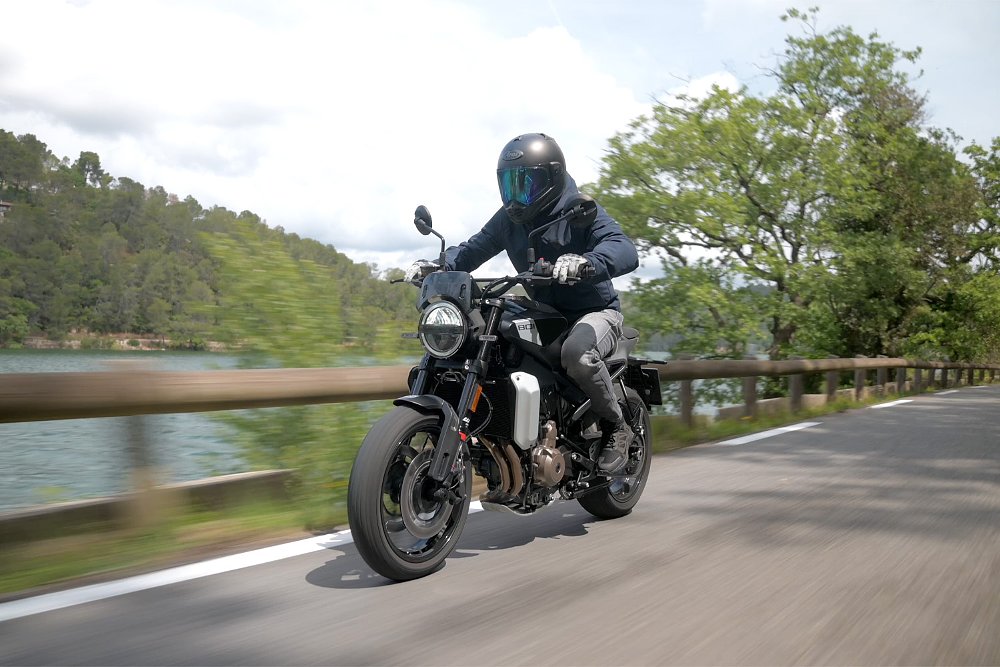
KTM is known for making apex-hunting, straight-blitzing street bikes, but not everyone wants a motorcycle that looks like a predatory insect. The Svartpilen 801 provides an alternative. It’s definition by opposition. It’s something powerful and pretty. Sure, the Svart comes with upgrades like a quickshifter and adjustable WP APEX suspension, but it’s the model’s classically handsome looks that beckon a new crowd. The 801 may be a versatile tool but what it does best is tear up a curvy road and look good while doing it. Sometimes, that’s all the marketing a bike needs.
| 2024 Husqvarna Svartpilen 801 | |
|---|---|
| Price (MSRP) |
$11,319 (as tested), $10,899 (base) |
| Engine | 799 cc, liquid-cooled, eight-valve, parallel twin |
|
Transmission, final drive |
Six-speed, chain |
| Claimed horsepower | 105 |
| Claimed torque | 64.2 foot-pounds |
| Frame | Steel tubular |
| Front suspension | WP APEX 43 mm fork, adjustable for rebound and compression damping; 5.5 inches of travel |
| Rear suspension | WP APEX shock, adjustable for spring preload and rebound damping; 5.9 inches of travel |
| Front brake | Dual J.Juan four-piston calipers, 300 mm discs with ABS |
| Rear brake | J.Juan two-piston caliper, 240 mm disc with ABS |
| Rake, trail | 24.5 degrees, 3.9 inches |
| Wheelbase | 58.1 inches |
| Seat height | 32.3 inches |
| Fuel capacity | 3.7 gallons |
| Tires | Pirelli MT60RS, 120/70R17 front, 180/55R17 rear |
| Claimed weight | 399 pounds (without fuel) |
| Available | May 2024 |
| Warranty | 24 months |
| More info | husqvarna-motorcycles.com |




